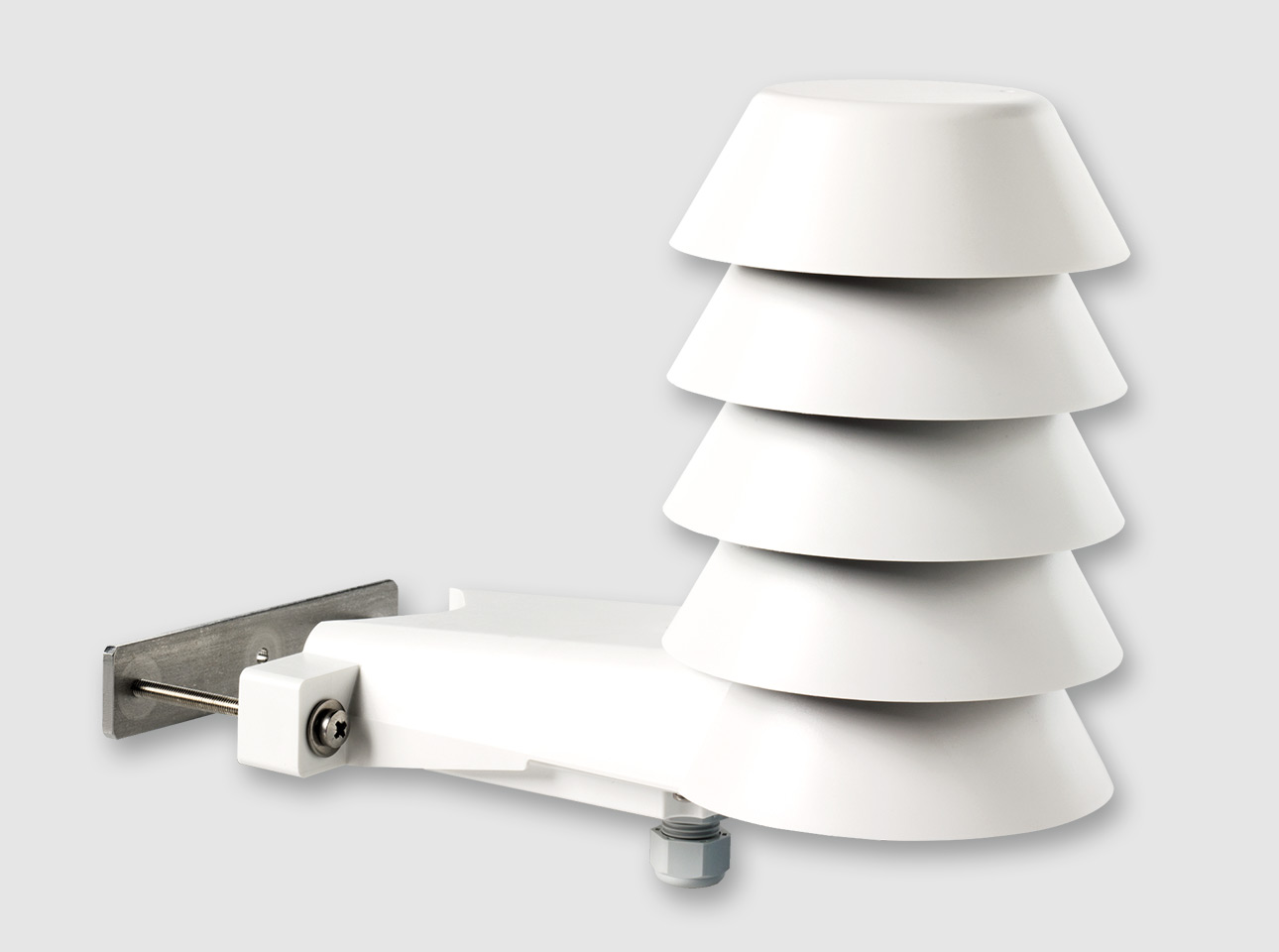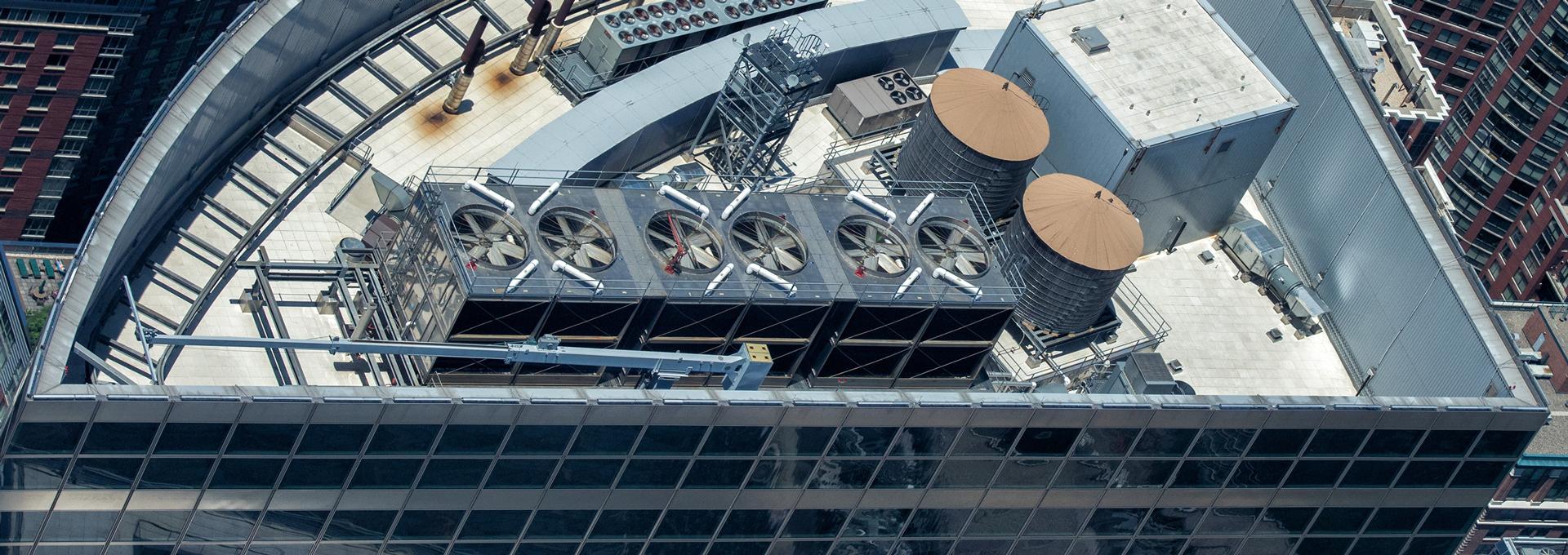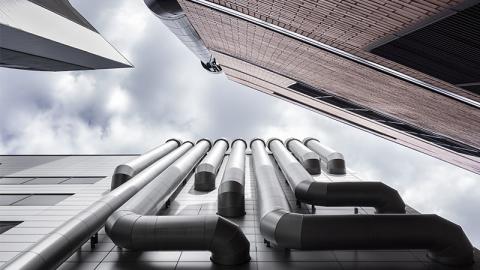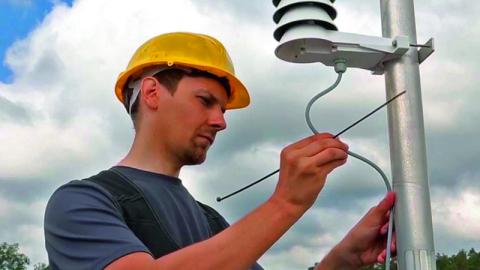Changing weather conditions can make measuring outdoor humidity a challenge, so selecting the right sensor is essential to the performance of a building’s HVAC system that often rely on outdoor relative humidity measurements, or calculated parameters based on humidity, to optimize the energy efficiency of the cooling equipment. If the outdoor humidity sensor is inaccurate, building controls, energy efficiency, and human comfort are sub-optimized. Sensor selection is often overlooked, yet it is a critical decision that building owners must endure periodically throughout the life of a building.
Free Cooling
When the outdoor air temperature is sufficiently cool and dry, a temperature-controlled air-side economizer can use outdoor air with no additional conditioning to cool the building. This is known as free cooling. An economizer consists of the following components: outside and return air dampers, damper actuators, outside air enthalpy (temperature & humidity) sensor or dry-bulb (temperature only) sensor, discharge air temperature sensor, and economizer controller. Some economizers control enthalpy by utilizing outdoor air when its enthalpy level is lower than that of the air indoors. However, outdoor air with a low temperature or low enthalpy level can still carry a high moisture load. A better solution is to use only outdoor air with a lower dew point temperature than the desired indoor dew point level to prevent moisture build up in the building.
With water-side economizers, free cooling is achieved when the working liquid (chilled water) bypasses the chiller and is cooled directly by the cooling towers. Cooling towers use the evaporation of water to remove process heat and cool the working fluid to near the wet-bulb air temperature. The working fluid and the evaporated fluid are usually both water. An outdoor wet-bulb temperature reading is necessary to determine a cooling tower’s efficiency and to initiate the free cooling cycle. This practice is suitable for cooler, drier climates where the wet-bulb temperature of the air is significantly lower than the dry bulb temperature.
Whether using an air- or waterside economizer, facility managers must rely on their outdoor sensors to provide accurate information. Sensor drift and instability can be detrimental, especially to high energy consumption facilities such as data centers. A high quality outdoor humidity transmitter with tight tolerance is required for calculating other parameters such as dew point, enthalpy, and wet bulb. A reliable outdoor sensor will recover from saturated conditions, and some sensors even have built-in heating cycles to prevent saturation.
Outdoor Transmitter Portfolio
Vaisala’s outdoor humidity transmitters incorporate this sensing technology, resulting in accuracy and stability even under extremely harsh outdoor conditions. The Vaisala HUMICAP® sensors fully recover from saturation. Optional heating to prevent condensation is also available for high humidity conditions. Vaisala’s outdoor transmitter portfolio includes products for measuring various humidity parameters (relative humidity, dew point, wet bulb, enthalpy, mixing ratio), temperature, wind, precipitation, carbon dioxide, and barometric pressure. The transmitters come with wide operating temperature ranges suitable for most climates, flexible installation options, and solar and radiation shields for protection from the elements.
Outdoor Measurement in Building Operations related products

Outdoor Humidity and Temperature Transmitter Series HMS110

Humidity and Temperature Transmitter Series HMS80

Humidity and Temperature Transmitters HMT120/130

Weather Transmitter WXT530 Series




